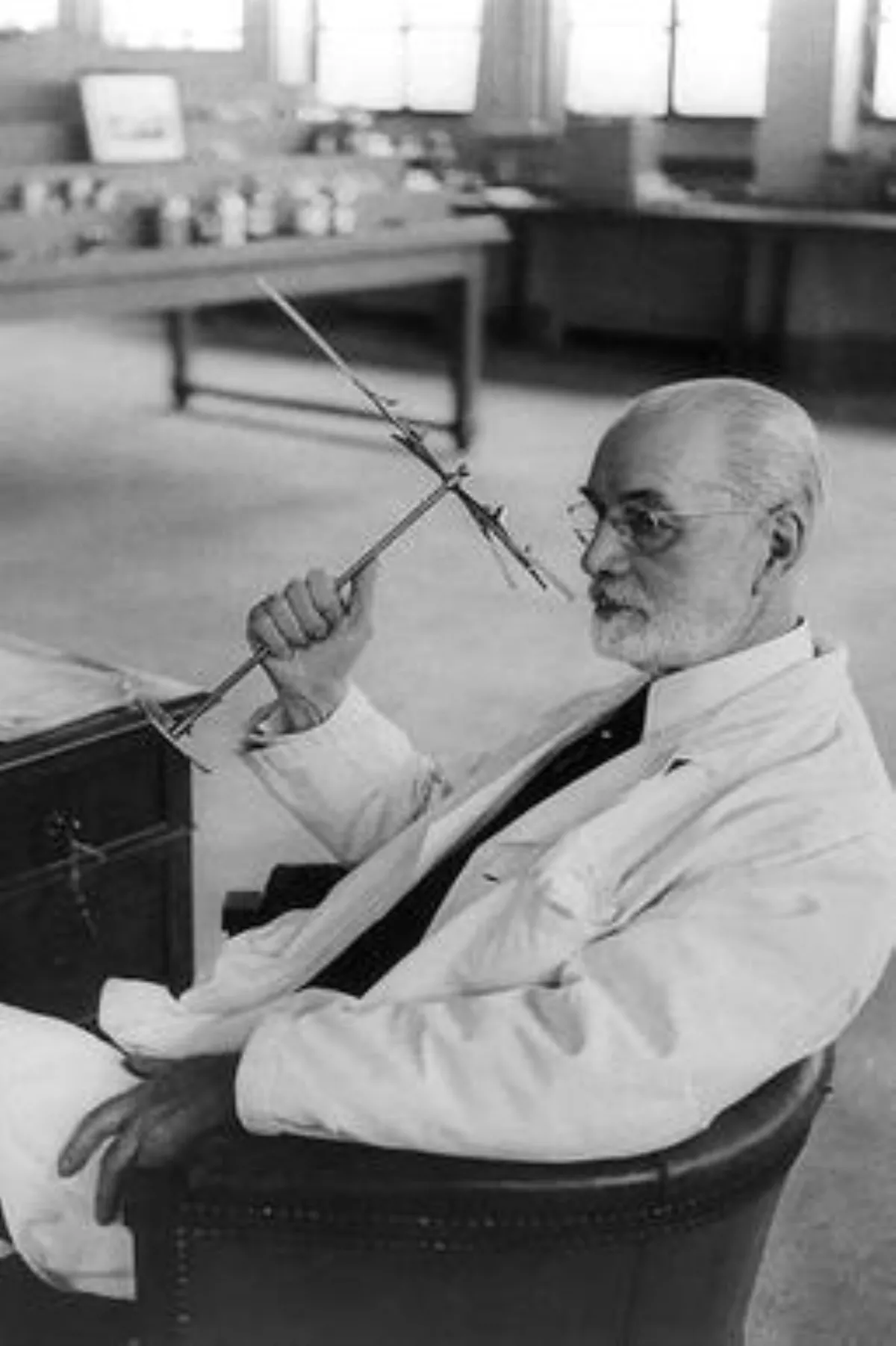 1.
1. One of the most prolific and influential perfumers of the 20th century, over eighty of Jacques Guerlain's perfumes remain known, though certain estimates suggest he composed some four hundred.

 1.
1. One of the most prolific and influential perfumers of the 20th century, over eighty of Jacques Guerlain's perfumes remain known, though certain estimates suggest he composed some four hundred.
Jacques Guerlain, the second child of Gabriel and Clarisse Guerlain, was born in 1874 in the family villa in Colombes.
Jacques Guerlain was educated in England, in keeping with family tradition, and then in Paris at the Ecole Monge where he studied history, English, German, Greek and Latin.
Jacques Guerlain then interned in the organic chemistry laboratory of Charles Friedel at the University of Paris, before being officially employed in the family business in 1894.
Jacques Guerlain experimented widely in both cosmetics and fragrance, perfecting a method for perfuming ink while publishing with Justin Dupont on the subject of various essential oils.
In 1905 Jacques Guerlain married Andree Bouffet, a Protestant from Lille, and did so according to Protestant law, thereby suffering excommunication from the Catholic Church.
An aesthete of diverse tastes, Jacques Guerlain purchased Nevers faience, and from Rouen manufactories alongside furniture by Andre Charles Boulle and Bernard II van Risamburgh, paintings by Francisco Goya, Edouard Manet and Claude Monet and antique books.
Jacques Guerlain's weekends were spent with his family and dogs on his parents' estate, the Vallee Coterel, a Norman Revival-style compound in Les Mesnuls.
Jacques Guerlain released one perfume during the war, Jasmiralda, a woody jasmine referencing the heroine of Marius Petipa's La Esmeralda.
Jacques Guerlain's Mitsouko, released in 1919, was the result of several hundred trials with oakmoss and the peach-smelling gamma-undecalactone.
In 1925 Jacques Guerlain presented his magnum opus, Shalimar, at the International Exposition of Modern Industrial and Decorative Arts, of which Pierre Guerlain was vice president.
Jacques Guerlain continued to push boundaries, the following year releasing Djedi, referencing the magician of the Westcar Papyrus, a stylistic anomaly in Jacques Guerlain's oeuvre in that it is unusually severe.
In 1932 Jacques Guerlain became a member of the audit committee of the Bank of France and would remain with the bank as either a member or advisor for the next twenty years.
In 1933 Jacques Guerlain created Vol de Nuit, a work of a rather sombre maturity.
Jacques Guerlain inherited the country estate and his father's stud, the Haras de la Reboursiere et de Montaigu in Nonant-le-Pin.
Jacques Guerlain was devastated and ceased creating for two years, abandoning his stud in Normandy.
In 1942 Jacques Guerlain returned with the perfume Kriss, named after an Indonesian dagger.
Jacques Guerlain re-released Kriss in 1945, renamed Dawamesk after a preparation of hashish.
Jacques Guerlain continued to work during the last eighteen years of his life, though created little.
Ode, Jacques Guerlain's swan song created with his grandson and successor Jean-Paul Jacques Guerlain, is a conventional floral in tribute to his gardens, though it bears a resemblance to Henri Almeras' Joy.
In 1956 Jacques Guerlain reluctantly agreed to be photographed in his laboratory and country home by Willy Ronis for a special in Air France Revue.
Jacques Guerlain was buried alongside his son, Pierre, and father in the Passy Cemetery.
Jacques Guerlain greatly admired Paul Parquet, whose influence at the time of Jacques Guerlain's debut was ubiquitous.
Jacques Guerlain admired many artists whose work he collected: Antoine-Louis Barye, Jean-Baptiste-Camille Corot, Henri Fantin-Latour, Jean-Honore Fragonard, Thomas Gainsborough, Francisco Goya, Edouard Manet, Claude Monet, Hubert Robert, Alfred Sisley, David Teniers the Younger and Edouard Vuillard, among others.
Jacques Guerlain was a devoted reader of crime fiction, though this is not reflected in the naming of his perfumes.
Reclusive by nature, Jacques Guerlain maintained relations with few of his confreres.
Jacques Guerlain did enjoy a friendship with perfumer Jacques Rouche, a neighbor with whom Guerlain shared a passion for the performing arts.
Jacques Guerlain had a fondness for aromatic spices and certain herbes de Provence.
Jacques Guerlain was a specialist on aromatic resins ; indeed he used opoponax in most of his formulae, sometimes in mere trace quantities - imperceptible in and of itself though lending to the overall texture of the perfume.
Jacques Guerlain was a friend of Louis Amic and Justin Dupont, both at Roure-Bertrand with whom he signed an exclusivity agreement for certain novel molecules used in Shalimar.
Jacques Guerlain worked in two laboratories, the first in Becon-les-Bruyeres and complete with gardens, destroyed by bombing in 1943, and the second in Courbevoie, built in 1947.
Jacques Guerlain's perfumed smelling strips he would arrange atop the mantelpiece in the sitting room, noting their evolution throughout the day.
Jacques Guerlain spoke little of his work and creative process; indeed he was painfully taciturn.
When pressed for words of wisdom, Jacques Guerlain was known to reply simply:.
In contrast to Francois Coty, Ernest Daltroff or Paul Parquet, autodidactic perfumers who revolutionised early 20th century perfumery, Jacques Guerlain distinguished himself by his shrewd discernment and wary conventionalism, no doubt informed by the weight of family heritage.